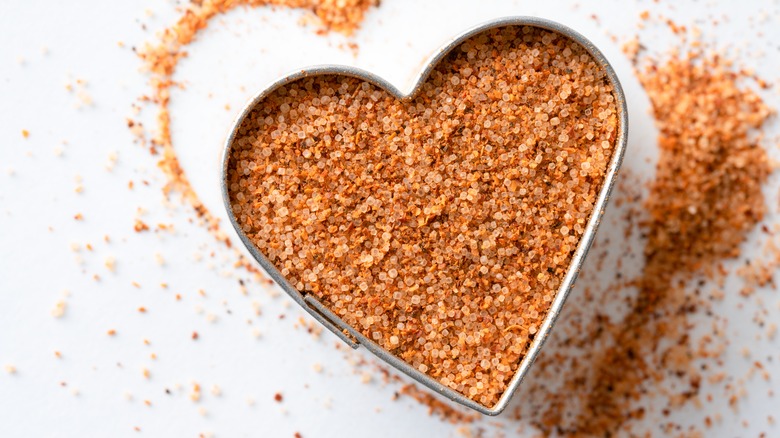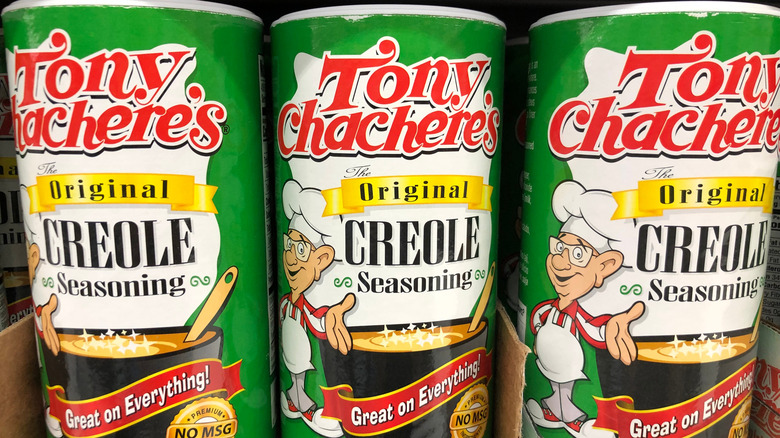What's Really In Creole Seasoning?
In the vast world of seasoning blends, it can get confusing to figure out exactly what each one is, and what to use it for. Perhaps the trendiest in recent years, according to Thrillist, has been Trader Joe's Everything But the Bagel seasoning, which is most often used on avocado toast and eggs (and eggs on top of avocado toast). This blend's popularity sparked a whole host of other unique seasonings from the chain, including Everything But the Elote, Za'atar, Cuban Style Citrusy Garlic, and 21 Seasoning Salute.
While you'll probably need to read the ingredients on the back to figure out these new seasonings, there are a multitude of classics that are better understood. You're probably familiar with the likes of curry powder, Italian seasoning, Old Bay seasoning, and Chinese five spice. According to The Spruce Eats, these are some of the classic spice blends that cooks can use to give their dishes a taste of another country, without having to invest in a new set of dry spices.
Creole seasoning, which works well on a variety of meat and seafood dishes, is another perplexing mixture, often confused for Cajun seasoning. Let's take a look at what Creole seasoning really is, and how it's different from its Cajun counterpart.
An herb-heavy spice blend
Creole seasoning contains a multitude of spices because the blend was influenced by many different cultures. While Creole cuisine originated mostly in New Orleans, MasterClass shares that African, Italian, French, Portuguese, and Spanish immigrants have all shaped the spice mixture. In her cookbook "Beyond Gumbo," author Jessica B. Harris explains that Creole food is "the world's original fusion food," and extends beyond New Orleans to the entire south Atlantic border (via Epicurious).
If you're adding Creole seasoning to your dish, you can be sure it won't be bland. According to Daring Gourmet, the blend features garlic powder, onion powder, paprika, salt, pepper, cayenne pepper, and an array of herbs like thyme, oregano, basil, rosemary, and bay leaf. MasterClass says this is the standard mixture, but it can also include parsley and be made without paprika. The exact recipe may vary based on the brand or family making it, but Creole seasoning gives a salty, spicy, herby flavor punch, that is, as Tony Chachere's packages boast, "great on everything" from a traditional jambalaya to broiled fish.
The difference between Creole and Cajun seasoning is that while Cajun has a higher variety and quantity of spices, creole seasoning emphasizes the more herby, earthy elements.

